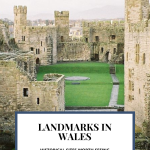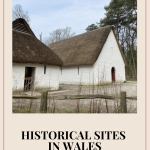Famous landmarks and historical sites in Wales
Are you looking for the best historical sites in Wales to visit? Then this guide is for you!
NOTE: The following is a guest post by Lowri of Many Other Roads.
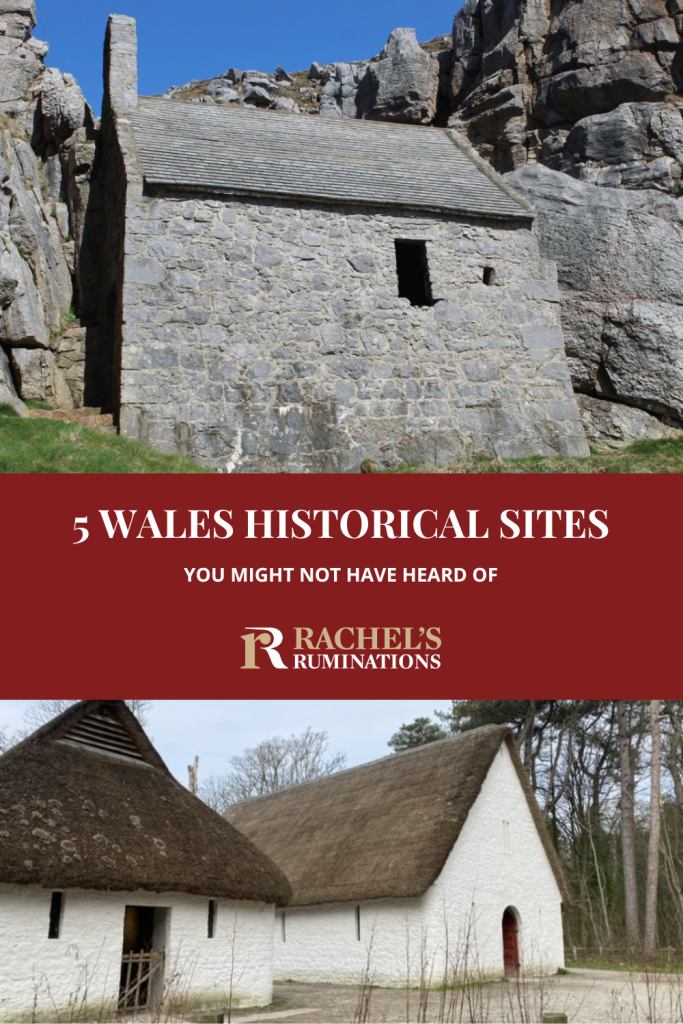
Disclosure: This article contains affiliate links. If you click on an affiliate link and make a purchase, I (Rachel) will receive a small commission. This will not affect your price.
Wales is a country that is part of the United Kingdom. It has many different landscapes and it is home to a lot of popular tourist attractions. You will find that there are a lot of historical sites in Wales. This is because it has a history that dates back to the Iron Age. It has been occupied by various groups, including Romans, Anglo-Saxons, Normans, and Vikings.
So if you’re in search of the best historical spots in Wales or just a trip full of amazing things to do, you can’t go wrong with a visit here. It has some of the best hiking trails in Britain and there are plenty of castles to explore. Let’s take a look at what Wales has to offer for your next trip!
What is Wales best known for?
Wales is a country of stunning scenery, fascinating history and Welsh culture. But what is Wales best known for?
Wales is known for its natural beauty and has some of the most beautiful mountains in Britain which are steeped in history. Some of these natural sites surround or are part of the best historical sites to visit in Wales.
Wales is also known for being such a historical place due to its language. The Welsh language has been spoken in Wales for centuries. It is one of the oldest languages in Europe.
There are many reasons why Wales is loved by many visitors. For example, it has a fantastic coastline with miles of sandy beaches and plenty of dramatic cliffs. In addition, there are castles, museums, galleries and historic buildings to explore all across Wales.
What World Heritage sites are in Wales?
There are so many landmarks in Wales, you will never run out of places to visit. But no trip is complete without visiting the UNESCO World Heritage sites. UNESCO selects World Heritage sites for being culturally, historically and/or scientifically significant. Wales has four World Heritages sites:
- The Castles and Town Walls of Edward I at Caernarfon, Conwy, Beaumaris and Harlech in northwest Wales: These are all 13th-century fortifications and castles in North Wales. Read about them here.
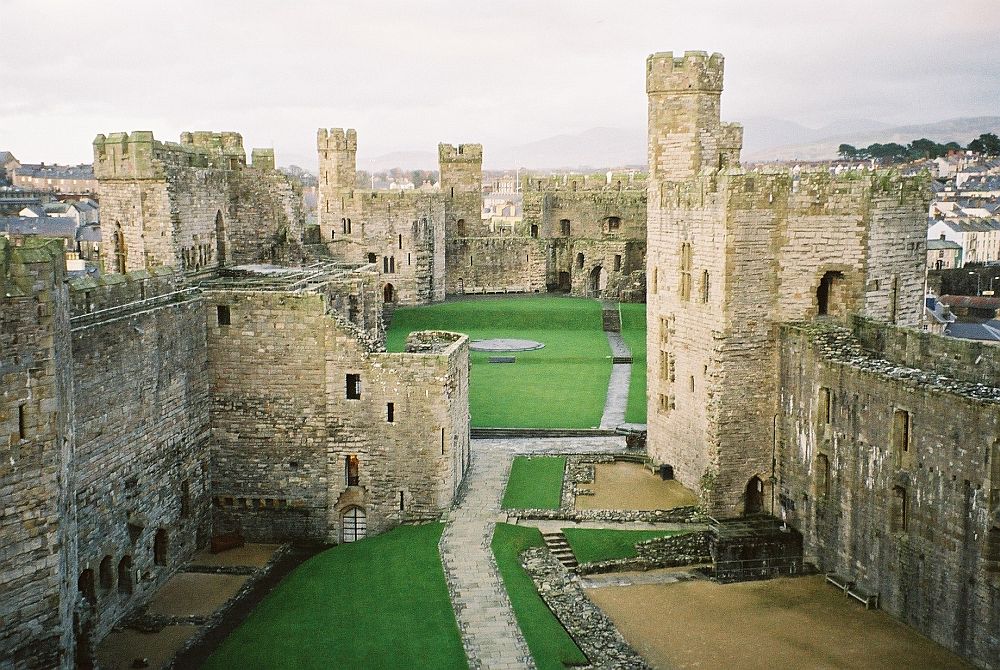
- The Slate Landscape of Northwest Wales: A region shaped by the slate-mining industry of the Industrial Revolution. Read about it here.
- Blaenavon Industrial Landscape in southeast Wales: A region shaped by its importance in both coal-mining and iron production. Website.
- Pontcysyllte Aqueduct and Canal in northeast Wales: This 19th-century “feat of civil engineering” is an aqueduct and 11 miles of the Llangollen Canal which crosses it. Website.
What are the best landmarks in Wales to visit?
There are many famous places to visit in Wales. However, it can be hard to find the time and money to visit them all. The best way to visit all these landmarks is by car. Some of the locations are remote and public transport will not be very helpful to you.
So if there are so many landmarks in Wales that every history lover should visit, which are actually the best? Besides the four castles and fortifications mentioned above – which are a must! – here are five historical sites in Wales that you should definitely consider visiting:
Cardiff Castle
Cardiff Castle is in the heart of the city of Cardiff and is absolutely one of the best places to visit in Wales. The Castle is both a medieval castle and a Victorian Gothic Revival mansion. It makes for a great day out!
The castle is historically interesting because it has been through so much over the years. It is about 2000 years old: archaeological evidence has shown that Cardiff Castle dates back to 50 AD when it was a stone Roman fortress. The last remains of the fortress can still be seen today despite the Castle’s changing roles over time.

After the fall of the Roman Empire, the next period of history here was the Normans. After the Norman Conquest, the site of the Roman fortress was reused to build a castle keep. Further medieval adaptions and additions were made to the castle over time.
A series of noble families owned the castle for the next few centuries, including the Tudors, until around 1766 when it was finally left in the hands of the Bute family. This family turned the once-Gothic castle into the lavish estate that you can still see today. In 1947, the Bute family gifted Cardiff Castle back to the city of Cardiff.
Visitors can explore the various rooms, gardens and exhibitions on offer with a ticket. But if you have a Cardiff postal address, you can visit for free. You can see the Norman Keep, the 19th-century Gothic Revival residential rooms, and a remnant of the Roman fort. Touring the castle takes a few hours and it’s a great place for families to visit as well. During the winter, you’ll find Christmas markets surrounding the castle, and in the summer there are multiple events too.
Besides visiting this great castle, Cardiff is a great place to stay to explore more of Wales. It has excellent transport links to the rest of the UK and historical locations like Castell Coch and St Fagans (see below) are close by.
Cardiff Castle: Castle St, Cardiff CF10 3RB. Open Monday to Friday 10:00-18:00 (till 17:00 in Nov-Feb) and Saturday to Sunday 9:00-18:00 (till 17:00 in Nov-Feb). The castle is open every day apart from 25-26 December and 1 January. Ticket prices are £14.50 for adults and £10 for children over 5 years old. Website.
Stay in Cardiff. Book your accommodations here.
Castell Coch
Castell Coch is an iconic landmark in Wales. On a site first occupied by a Norman castle dating to the 11th century, a new castle was built on the ruins in the 13th century, but that fell into ruin as well. A new fairytale castle was built in the 1800s on the foundations of the old one in the then-popular Gothic Revival style. The original name for the castle – “Coch” – means “red” in Welsh.
Under the castle today you can still see evidence of the 13th-century castle which was once used as a hunting lodge by Marcher Lord Gilbert de Clare, a very powerful English noble. The newer Victorian-period castle was designed as a country retreat for the same family that owned Cardiff Castle: the Butes.
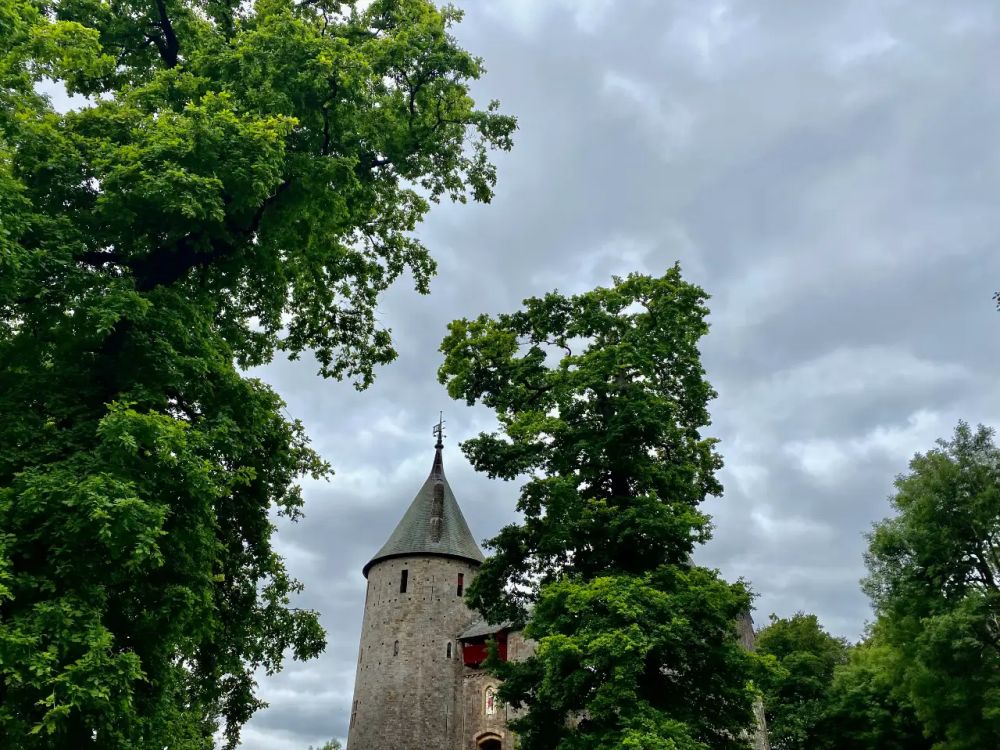
There are many different parts of this castle to see, including the gardens, which are open year-round and have beautiful views. The Gothic Revival rooms inside are an over-the-top fantasy of mock medieval decor. You also have access to the tower house, which contains displays about life inside a medieval castle and offers an audiovisual tour.
If you are a Cadw member, you can visit for free with your pass. Otherwise, you can get your tickets in advance or when you turn up at the castle. It can get busy during the summer or when the schools are on breaks so make sure you plan your visit well.
Castell Coch: Castell Coch, Cardiff CF15 7LL. The Castle is open every day apart from 24-26 December and 1–31 January. Open 9:30-17:00 in March-June and September-October; 9:30-18:00 in July and August, and 10:00-16:00 in November-February. Ticket prices are £8.30 for an adult and £5.80 for children (ages 5-17). Website.
If you like 19th-century Neo-Gothic confections like Cardiff Castle and Castell Coch, you might enjoy reading about these castles: Hluboká Castle in South Bohemia, Czechia and Castle de Haar in the Netherlands.
St Fagans National Museum of History
This is my absolute favourite Welsh landmark and probably one of the most important historical sites in Wales too. It is a museum of Welsh life and culture located in Cardiff. The museum is dedicated to the preservation of Welsh culture through historical buildings and artefacts. Here you will find items from Welsh history from the Iron Age to modern-day life.

St Fagans was established in 1948 as the National Museum of Wales. However, its buildings and exhibits go back into history a lot further. Forty historic buildings and structures from all over Wales have been dismantled at their original site and reassembled at St Fagans to preserve and protect them forever. They have found a home on the grounds of St Fagans Castle, a manor house from the Elizabethan era.
You’ll find many historic buildings to explore on-site, including a 16th-century Tudor merchant’s house, a village schoolhouse from 1880, Bryn Eryr Iron Age roundhouses and the medieval parish church of Saint Teilo. Each building includes information about when it was built, which part of Wales the building came from and what the building was used for. You will also find a member of staff in each building ready to answer any questions you may have.
This is one of the best historical sites in Wales to visit to get a true insight into local Welsh life through the centuries.
Apart from the historic buildings to explore, there are plenty of other things to do here. It’s a great day out for families and children because they can enjoy exploring historic buildings, dressing up in traditional Welsh costumes and learning about Welsh culture through interactive exhibits.
There is a park, a woodland adventure climb and great places to enjoy a picnic. One of the most popular places to grab a snack is at the old bakery, which is still in use. The best thing to try here is the freshly-made cheese buns; they are amazing! Just remember to bring cash as they currently don’t accept cards at the bakery.
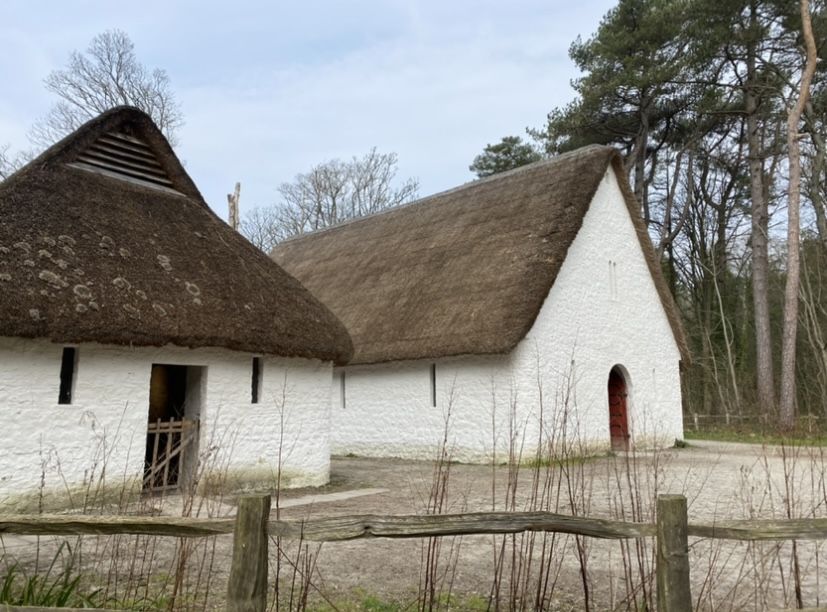
A visit to St Fagans is completely free, but if you want to use the car park it will cost you £6. This ticket is valid all day and is more convenient than getting public transport as there is no train or bus that goes directly to the site.
St Fagans National Museum of History: St Fagans, Cardiff CF5 6XB. Open daily 10:00-17:00. Admission is free. Website.
If you don’t want to arrange your trip yourself, take a look at these multi-day tours in Wales.
St Davids Cathedral
St Davids Cathedral is a popular and beautiful tourist attraction in the city of St Davids, attracting tourists from all over the world. There are many reasons why this cathedral is so popular and one of them is that it has an impressive history.
This cathedral stands on the site of an earlier monastery founded in the 6th century by St David. The current cathedral, dating to the 12th century, has played an important role in Wales, becoming a pilgrimage church dedicated to St David soon after its completion and remaining a center of Catholicism in Wales until the Reformation. As a Protestant cathedral, it had an important impact on the preservation of the Welsh language because this is where the Bible was first completely translated into Welsh in 1588.
This is not only the oldest cathedral in Wales, it is one of the most popular attractions due to its links with St David (Dewi Sant), the 6th-century patron Saint of Wales. When St David died, this was his final resting place. Until the Reformation, it was a place of pilgrimage.
The building is beautiful, with a round rose window, an atmospheric cloister, a number of ornate chapel tombs, a quire with amusing wood carvings on the seats, and much more. Make sure to look up to see the richly decorated ceilings.
St Davids Cathedral: St Davids, Haverfordwest SA62 6RD. Opening times are from 10:00-16:00 (Monday-Saturday) and 13:00-15:30 on Sundays. The Cathedral is open all year round and there is no cost to visit, but a £5 donation is appreciated. As this is a religious building, you will have to dress modestly for your visit. Website.
You might also enjoy reading these articles from other parts of the UK:
St Govans Chapel
This landmark in Wales isn’t as popular as the others, but it should be! Located in St Govans, Pembrokeshire, this chapel is steeped in history and many local tales. And what makes it a great place to visit is not only its unique location, but the views from there are out of this world.
This tiny stone chapel is carved out of the cliffs on the Pembrokeshire Coast, and the only way you can get to it is via a stone stairway of over 50 steps.
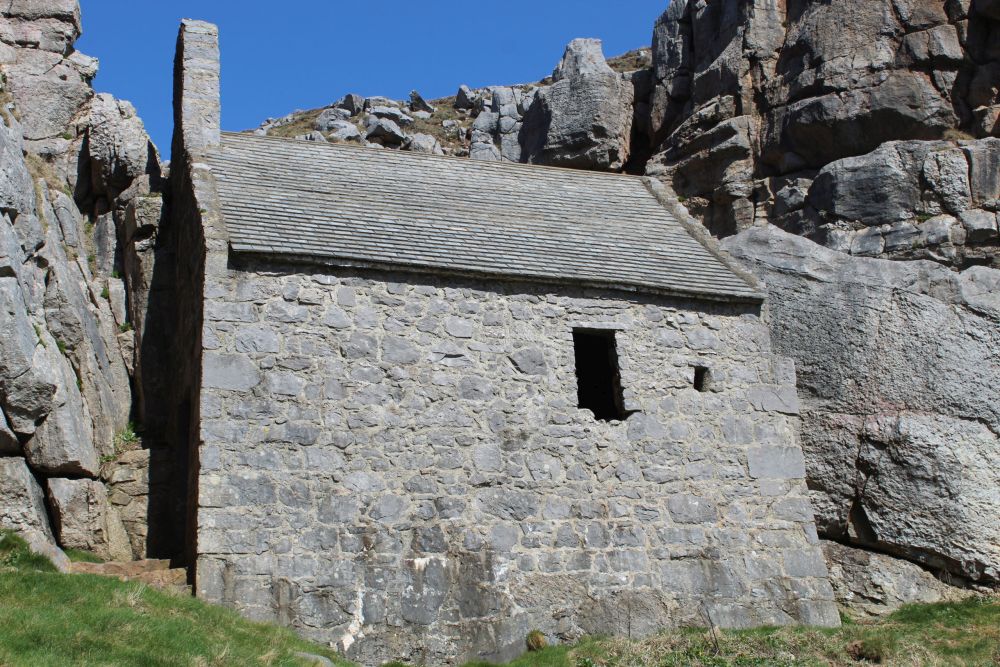
The tale behind this unique chapel is that St Govan created it to save him from pirates in the 6th century. It was probably just a cave at the time, and the outer walls were added in the 13th century. This location then became a very important site of worship.
Inside the chapel, you will find nothing but a bench and an altar. It is rumoured that St Govan is buried under the altar.
You can get here by public transport or car but because of its location, driving is the best option. There are plenty of local car parks near St Govans Chapel but the most convenient is at Castlemartin Range. There are also other great Welsh landmarks you can visit at Castlemartin range such as Huntsmans Leap, a deep natural chasm. For those looking for a family day out or for the best coastal walks, this is a great part of the UK for walking.
St Govans Chapel: St. Govan’s Head, Bosherston SA71 5DR, UK. The chapel is open 24 hours all year round and is free to visit. As the Chapel is located near an active firing range, you will not be allowed to visit if the red flags are flying. Website.
Historical sites in Wales: Final thoughts
Wales is not one of the most popular destinations to visit in Europe, and apart from the temperamental weather, it’s very hard to see why. There are so many great landmarks to visit throughout Wales, that it could keep any visitor busy for weeks. Combine this with locations with the most breathtaking views, and you have a must-visit destination for all.
My travel recommendations
Planning travel
- Skyscanner is where I always start my flight searches.
- Booking.com is the company I use most for finding accommodations. If you prefer, Expedia offers more or less the same.
- Discover Cars offers an easy way to compare prices from all of the major car-rental companies in one place.
- Use Viator or GetYourGuide to find walking tours, day tours, airport pickups, city cards, tickets and whatever else you need at your destination.
- Bookmundi is great when you’re looking for a longer tour of a few days to a few weeks, private or with a group, pretty much anywhere in the world. Lots of different tour companies list their tours here, so you can comparison shop.
- GetTransfer is the place to book your airport-to-hotel transfers (and vice-versa). It’s so reassuring to have this all set up and paid for ahead of time, rather than having to make decisions after a long, tiring flight!
- Buy a GoCity Pass when you’re planning to do a lot of sightseeing on a city trip. It can save you a lot on admissions to museums and other attractions in big cities like New York and Amsterdam.
- Ferryhopper is a convenient way to book ferries ahead of time. They cover ferry bookings in 33 different countries at last count.
Other travel-related items
- It’s really awkward to have to rely on WIFI when you travel overseas. I’ve tried several e-sim cards, and GigSky’s e-sim was the one that was easiest to activate and use. You buy it through their app and activate it when you need it. Use the code RACHEL10 to get a 10% discount!
- Another option I just recently tried for the first time is a portable wifi modem by WifiCandy. It supports up to 8 devices and you just carry it along in your pocket or bag! If you’re traveling with a family or group, it might end up cheaper to use than an e-sim. Use the code RACHELSRUMINATIONS for a 10% discount.
- I’m a fan of SCOTTeVEST’s jackets and vests because when I wear one, I don’t have to carry a handbag. I feel like all my stuff is safer when I travel because it’s in inside pockets close to my body.
- I use ExpressVPN on my phone and laptop when I travel. It keeps me safe from hackers when I use public or hotel wifi.


